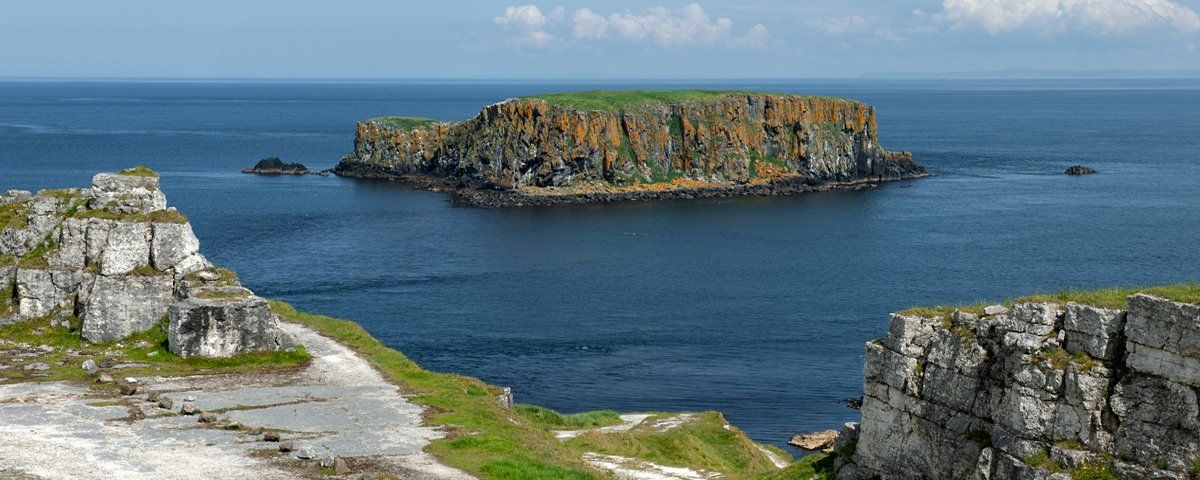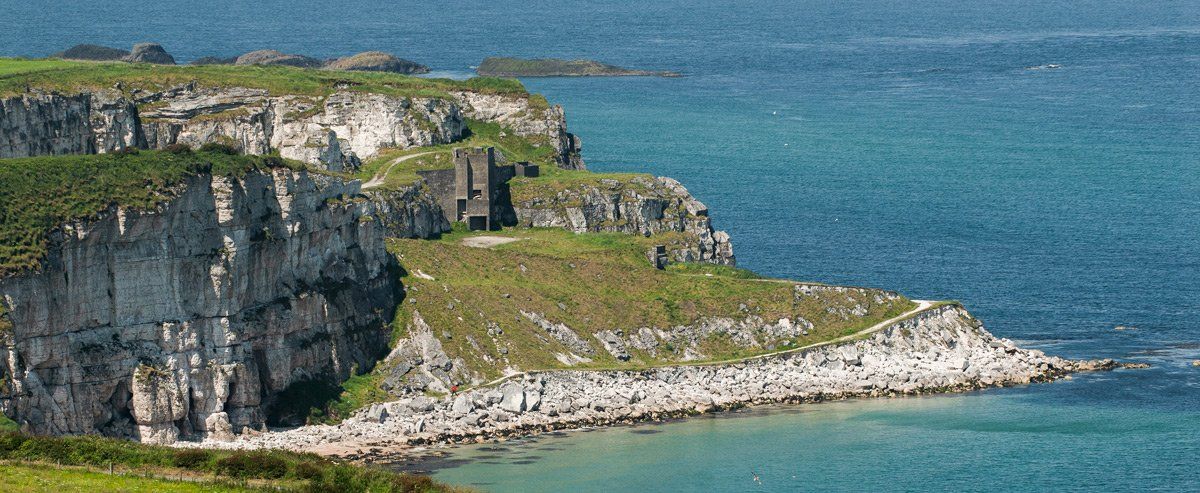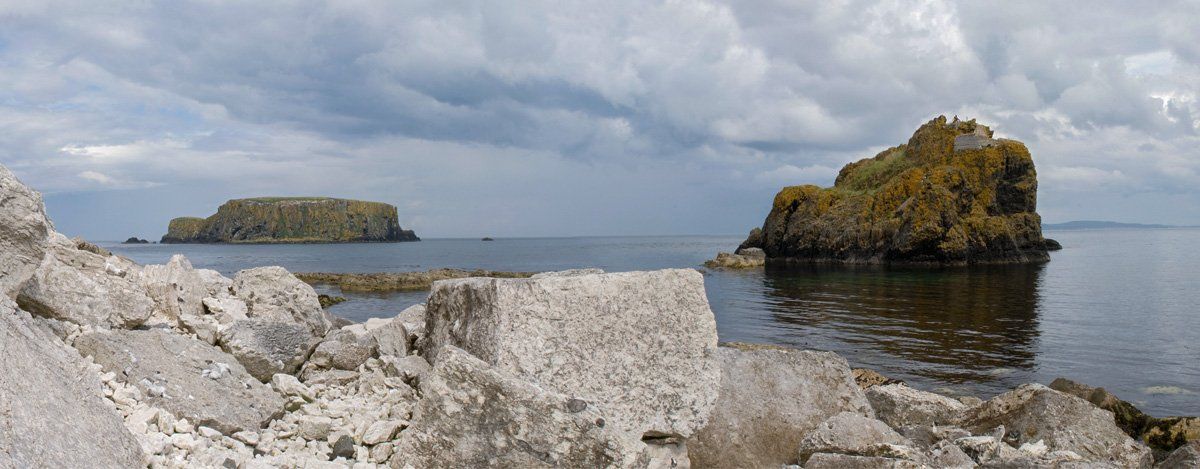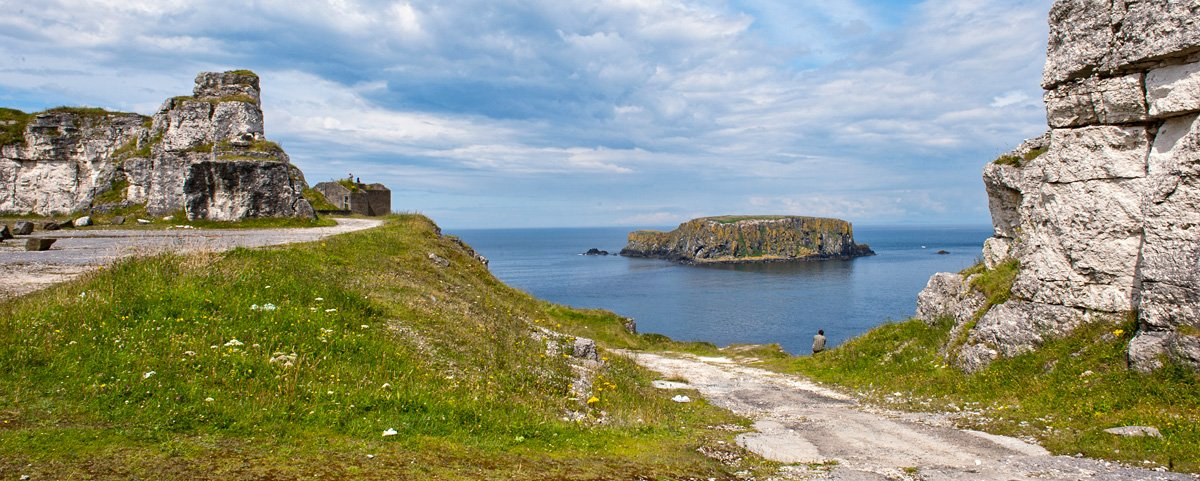Before the1800s Larry Bane Head extended out to a sheer drop, there was the remains of a large fort which dated to 800AD this was part of the whole headland and had a dry moat for defence, all this was lost during the extensive quarrying which took away most of the headland. The caves below the head on the Ballintoy side were used by local fishermen. Limestone extraction began at Ballintoy harbour and underwent major expansion when the Eglinton Chemical Company came to Ireland circa 1870s, they leased the harbour and the cliffs of Larry Bane including the overlying dolerite of Knocksoghey Hill. This Scottish company from Irvine was one of the most successful of its day and operated throughout the UK, they were involved in the quarrying and production of limestone, whiting, brick and tile production and were a major supplier to the pottery industries.
The company began operations in North Antrim by purchasing the Glenarm limestone field and several integral quarries along the coast between Glenarm and Ballintoy. Larry Bane was the largest operational site producing both limestone and dolerite product. The materials and finished product (sett stones) were shipped from two harbours, one at Glenarm and the other at Ballintoy, the former they owned outright and the latter they leased. While Ballintoy harbour was in operation the company built a loading facility on Stackaboy (just off Larry Bane Head) the pully and bucket loading system transferred material directly from the quarry into ships.
At Larry Bane and Ballintoy (acquired from a previous operator), they extracted limestone and at Brockie Quarry and the Deer Park Quarry (above Ballintoy) they produced sett stones. A valuable material that the company found in north Antrim, as well as flint, was iris bauxite, the company were the first to discover this in Ireland and used it to pioneer a new process in brick and tile production. This process produced bricks that had greater resistance to heat than silica brick. This innovation advanced bricks technology to meet the needs of steel furnaces, both chrome ore bricks and alumina bricks were patented by the company.
The iris bauxite used in the production of alum was exported from Ballintoy to their brick-making factories in Scotland. At the time the company were the biggest exporters of limestone and whiting from Ireland, the combined shipments from Ballintoy, Glenarm and Stackaboy at the peak of operations reached approximately four thousand tons a week with ships being loaded at the rate of 100 tons an hour. The company operated three steamships, the Eglinton, Glenlut and Glenarm with additional schooners being chartered as needed. Larry Bane is a fascinating post-industrial site which today has been reclaimed by nature.




